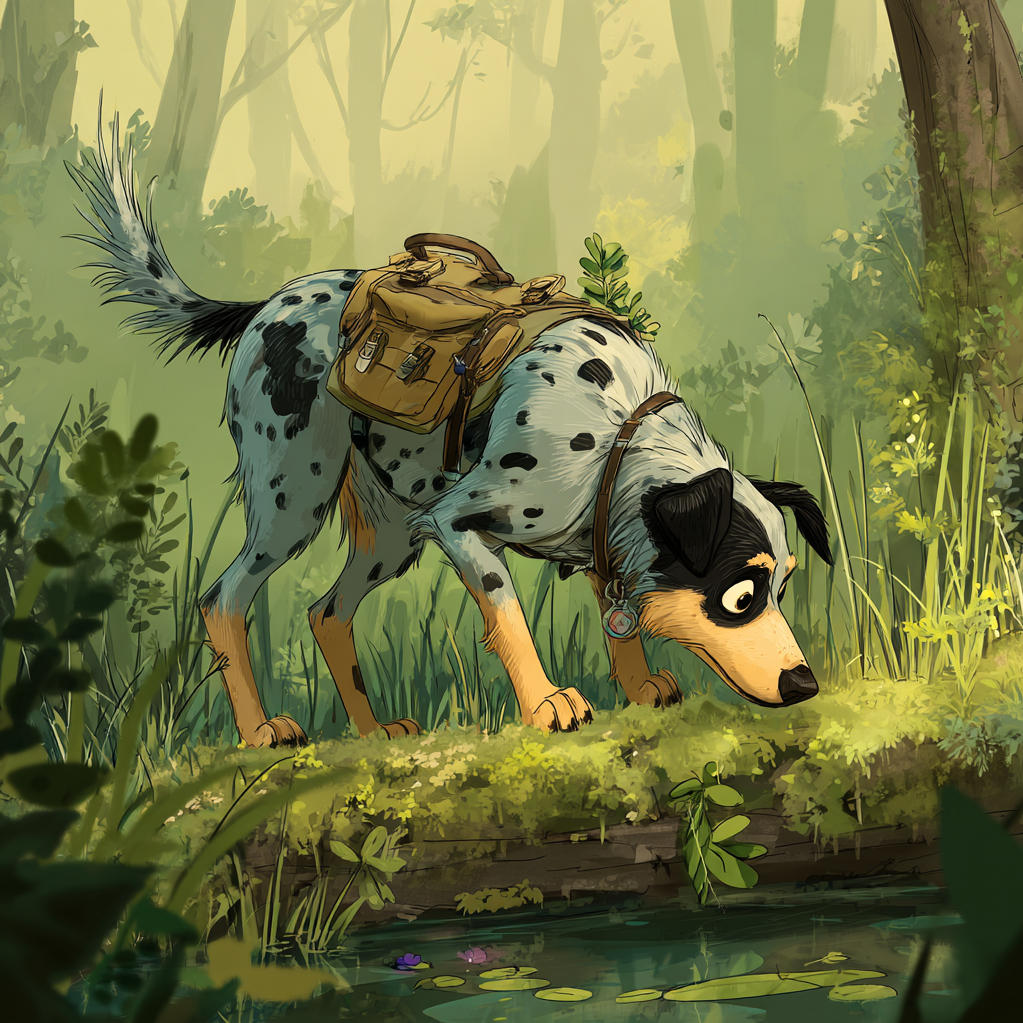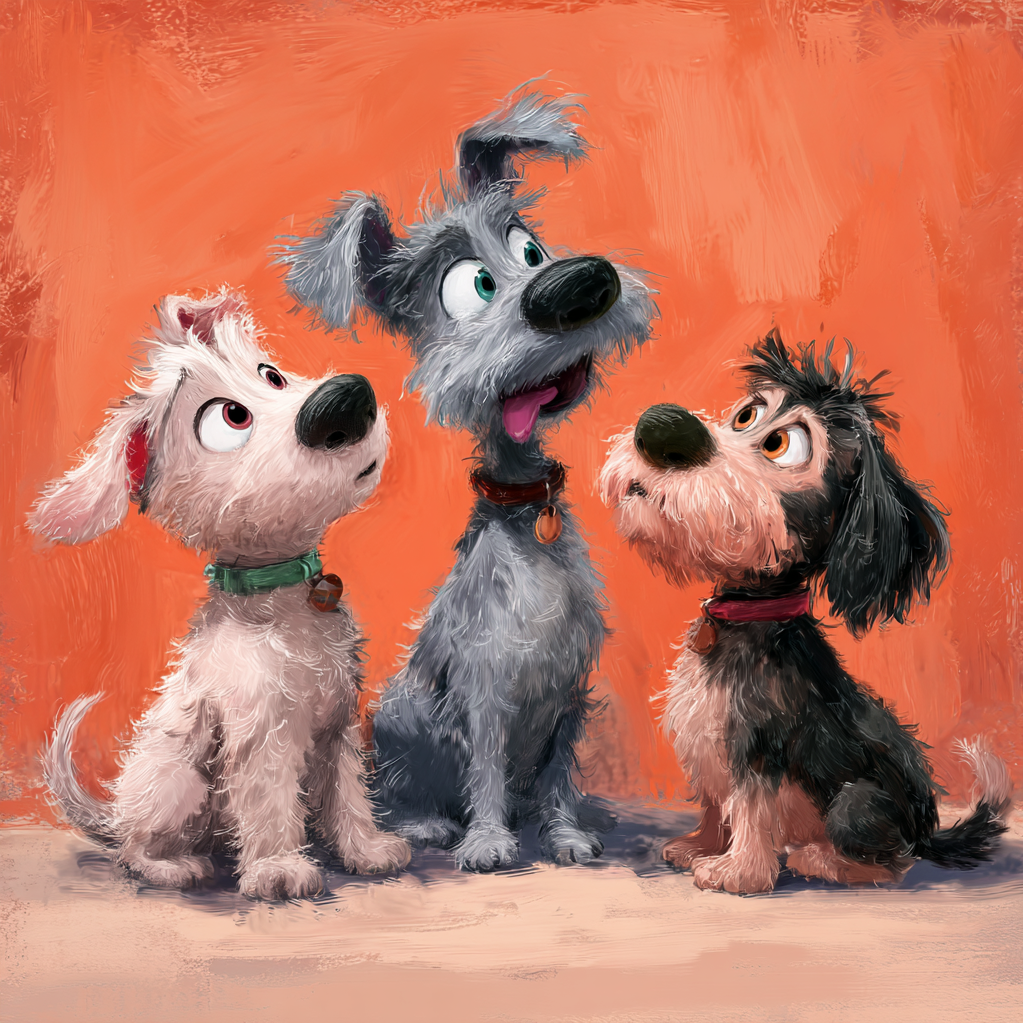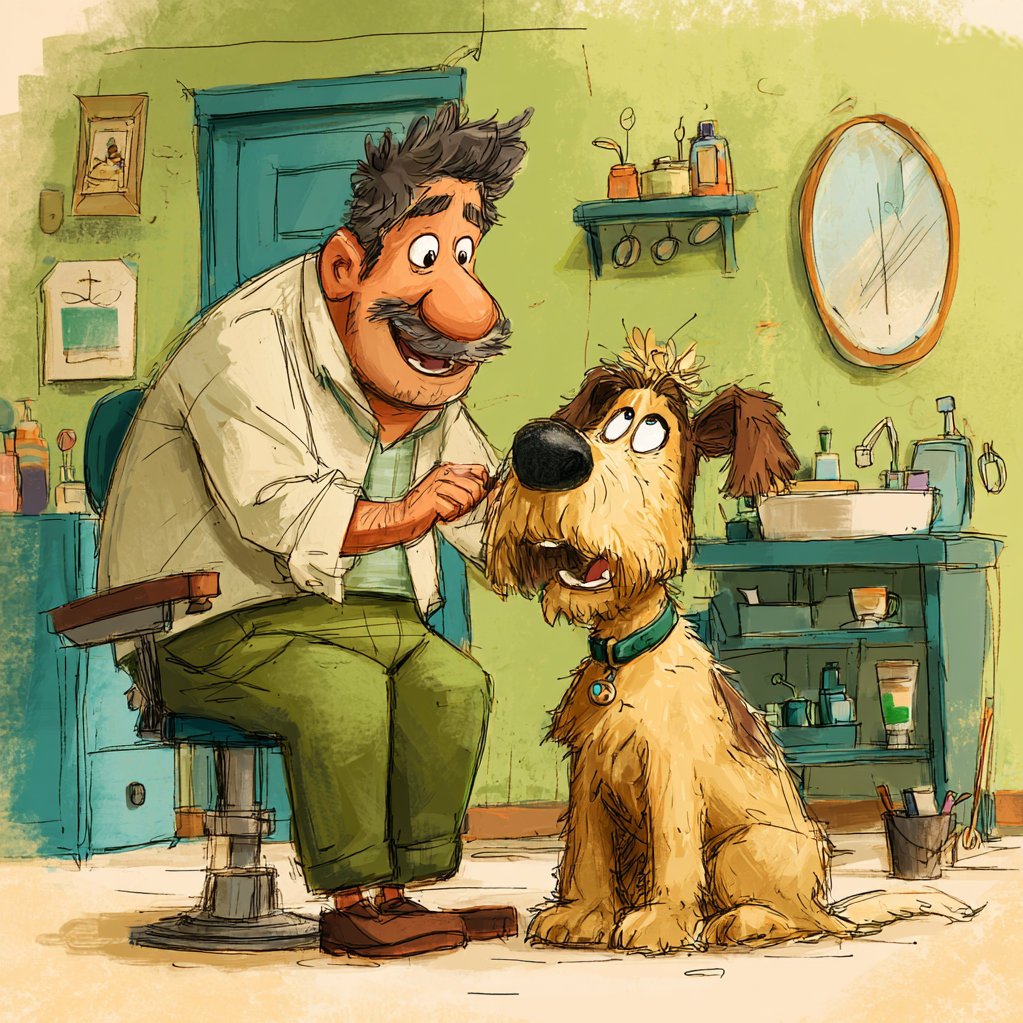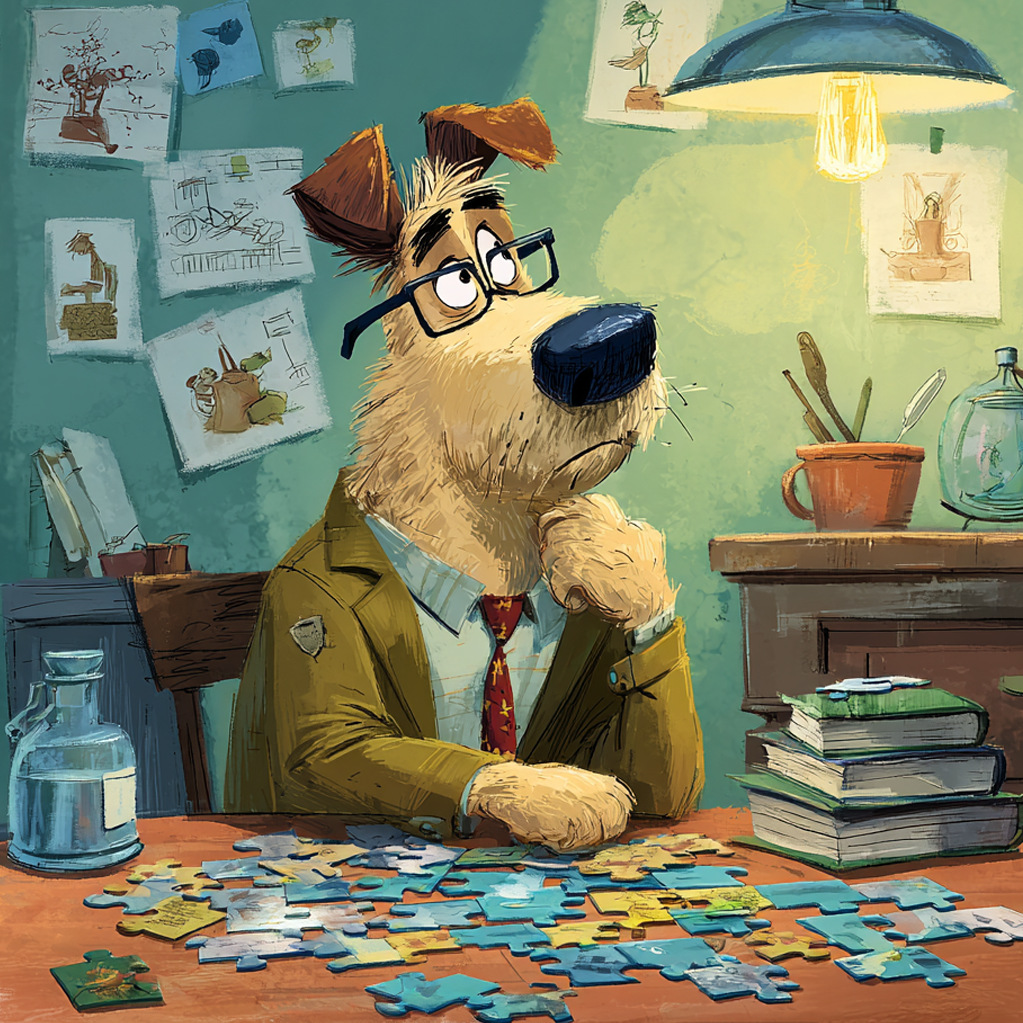The Secret Symphony in Your Dog’s Nose: A World You Can’t Imagine
Imagine every scent you’ve ever known – fresh coffee, rain on hot pavement, your grandmother’s perfume, a rotten egg – hitting you all at once. Not as a confusing blur, but as distinct, layered threads, each telling a story, painting a picture, revealing a history. Now multiply that intensity by ten thousand. That’s not hyperbole. That’s Tuesday morning for your dog. That damp, velvety nose isn’t a cute accessory; it’s the most sophisticated biological sensor on the planet, a master key unlocking a dimension of reality utterly closed to us sight-bound humans. Understanding it isn’t just biology; it’s the first step to truly seeing your dog. To respecting the sheer alien wonder of how they experience everything.

Part 1: The Canine Olfactory Engine – How the Nose Knows
Forget what you know about smelling. Your dog isn’t just breathing in; they’re conducting a complex, fluid dance with the air itself. See those little slits on the sides of their nostrils? Genius. When they exhale, air jets out those slits. This isn’t waste; it’s engineering. Those exiting jets create tiny, focused whirlwinds that actively suck new, scent-rich air in through the front. It’s a continuous, flowing sampler – a constant, real-time feed of olfactory data. No pause. No break. Just an endless stream of scent information pouring in. That cool wetness? It’s not just for booping. It’s a sophisticated capture system. The thin layer of mucus acts like flypaper for drifting scent molecules, trapping them, dissolving them, making them ready for analysis. It transforms the intangible into the readable.
As the air travels deeper, it enters the nasal cavity – a cavern far more complex and lengthy than our own. Here, it encounters a labyrinth of bony, scroll-like structures called turbinates. These turbinates are densely carpeted with a specialized, yellowish-brown tissue known as the olfactory epithelium. This is where the true magic unfolds. The olfactory epithelium is packed with an astonishing number of olfactory receptor cells (ORCs). While humans boast a mere 5-6 million, your dog possesses anywhere from 220 million to over 1 billion, depending on breed (Bloodhounds and Beagles are the undisputed champions). But it’s not just quantity; it’s diversity. Humans have roughly 400 different types of olfactory receptor genes. Dogs? They have over 800, potentially up to 1,200 distinct types. This genetic bounty allows them to detect and discriminate between an almost unimaginable spectrum of odors at concentrations we can scarcely conceive – often hundreds of thousands to millions of times lower than our threshold. Imagine detecting a single teaspoon of sugar dissolved in two Olympic-sized swimming pools. For your dog, that’s child’s play.
This torrent of scent information doesn’t just float around; it gets processed with incredible efficiency. The part of your dog’s brain dedicated solely to analyzing smells – the olfactory bulb – is proportionally 40 times larger than a human’s relative to total brain size. Crucially, scent signals in dogs take a privileged neural pathway. They bypass a major sensory relay station (the thalamus) that most human senses travel through and instead go straight to specialized cortical areas designed for rapid odor identification, discrimination, and memory. This direct line explains the lightning speed and profound depth of their scent perception.
Adding another layer to this sensory symphony is the Vomeronasal Organ (VNO), also known as Jacobson’s Organ. Located on the roof of the mouth behind the front teeth, this specialized structure detects pheromones – the chemical signals animals emit to communicate sex, reproductive status, territory, fear, and social standing. When you see your dog curl its lip back in a slight grimace (the Flehmen response) after intensely sniffing urine or another dog, they are actively drawing air into the VNO ducts to analyze these potent social messages.
So, what does this all mean in practice? When your dog sniffs a patch of grass, they aren’t just smelling “grass.” They are reading a complex, layered story. They detect the individual scents of every dog who passed by, how long ago they were there, their sex, health status, and emotional state. They smell the rabbit that crossed hours earlier, the dropped crumb from a passerby’s lunch, the subtle shift in the soil’s composition, and the distant approach of a rainstorm. They perceive the history, composition, and emotional weight carried within a scent plume with a richness we can only dream of. This incredible ability underpins their work in detection (finding drugs, explosives, missing persons, medical conditions) and tracking, forming the very essence of their interaction with the world.
Part 2: Enriching the Scent Mind – Games to Ignite Instinct
Recognizing the sheer power and importance of your dog’s nose is the first step; actively engaging it is the next. Scent work isn’t just fun; it’s profound mental enrichment. It provides deep cognitive challenges, alleviates boredom and anxiety, builds immense confidence (especially in shy dogs), strengthens your bond through cooperative play, and fulfills a core biological drive. It’s as essential as physical exercise for a truly balanced and happy dog. Here are ways to tap into this innate passion:
1. The Joy of “Find It!”: This simple game is incredibly powerful. Start easy. Have your dog sit and stay. Show them a delicious, high-value treat, let them get a good sniff, then toss it just a few feet away onto an easy surface like grass or linoleum while enthusiastically saying “Find it!” Release them to hunt it down and celebrate their success. Gradually build complexity: hide the treat behind your leg, under the edge of a low box, then under slightly more challenging covers like a towel corner. Once they grasp the concept, move to hiding treats or a favorite toy while they wait in another room. Release them with “Find it!” and start with obvious spots, slowly progressing to trickier hides – under couch cushions, inside open boxes, on low shelves. For advanced players, hide multiple items or teach them names for specific toys (“Find Bear!”).
2. The Muffin Tin Mystery: A household item becomes an instant puzzle. Take a muffin tin and place tasty treats in only a few of the cups. Cover every cup, including the empty ones, with tennis balls or crumpled paper balls. Your dog’s mission: use their nose to identify which cups hold the treasure and nudge off the covers to claim their reward. It’s cheap, simple, and provides excellent sniffing concentration.
3. Snuffle Mats & Sensory Boxes: Foraging Fun: These tools mimic natural foraging behaviors. A snuffle mat, typically made of dense fleece strips knotted into a base, is perfect for hiding kibble or small treats. Sprinkle the food throughout the folds and crevices. Your dog will joyfully root and snuffle, using their nose to extract every morsel. It’s fantastic for slowing down fast eaters and providing mental stimulation during mealtime. For a larger-scale adventure, create a sensory box. Use a large cardboard box or a shallow plastic kiddie pool. Fill it with crumpled paper, empty paper towel tubes, clean towels, or even safe, clean leaves or grass cuttings (ensure no pesticides or toxins). Hide treats or pieces of kibble deep within the materials. Let your dog dig, forage, and sniff to their heart’s content (supervise to prevent ingestion of non-food items).
4. The Foundations of Detection: Scent Matching: This game introduces the core concept behind professional detection work. Start with several identical containers (cardboard boxes, opaque Tupperware with holes punched in the lid). Let your dog watch you place a treat under one. Encourage them to find it. Once they understand containers can hold treasure, introduce a “scent article” – a specific item like a clean cotton ball or small piece of cloth that only you have handled. Let your dog sniff this target scent. While they wait out of sight (or are briefly distracted), hide only this scent article under one of the identical containers. Bring your dog back, present the target scent for them to sniff again, and give your search command (“Find it!” or “Search!”). Reward lavishly when they correctly indicate the container holding the matching scent (by pawing, staring intently, or barking). This builds focus and teaches them to identify a specific odor amidst distractions.
5. The Ultimate Hide & Seek: “Go Find…”: This game blends scent work with bonding and excitement. Start with one family member hiding in an easy spot within the same room – behind a door, under a blanket with a foot sticking out. Tell your dog enthusiastically, “Go find [Name]!” Encourage them as they search. When they succeed, the found person should erupt in praise and reward. Gradually increase the challenge: hiding in different rooms, choosing trickier spots (inside a closet, behind furniture), or having them find multiple people in sequence.
Keys to Scent Game Success: Always begin with easy challenges to build confidence and avoid frustration. Use truly irresistible rewards – special treats or a beloved toy reserved only for scent work. Keep sessions short, sweet, and positive; 5-15 minutes is often plenty, ending while your dog is still eager for more. Resist the urge to rush or guide them; the process of searching is the reward. Celebrate every find with genuine enthusiasm. Never punish a missed find; simply make the next one easier. Watch your dog’s body language – the intense focus, the lowered head, the deliberate sniffing – it’s a beautiful display of instinct in action.
Part 3: Following the Trail: Beginner Tracking Adventures
Tracking harnesses your dog’s most primal skill: following a scent trail left on the ground. It’s not just about finding something; it’s about deciphering a story written in odor. It requires immense concentration, providing deep mental satisfaction and a powerful connection to their heritage. Always use a well-fitting Y-shaped harness with a back ring for the leash to avoid neck pressure.
Laying the Groundwork: Begin by selecting a dedicated “scent article.” This should be an object with a strong, unique scent you can easily carry – a leather glove, a specific wooden dumbbell, or a piece of fabric. Handle it minimally with clean hands and use it only for tracking. Choose your starting location wisely: a quiet, familiar area with short grass or bare dirt is ideal. Avoid concrete initially. Early morning or late afternoon often offer calmer winds and higher humidity, which helps scent cling to the ground. Avoid areas crisscrossed by many other trails.
Exercise 1: The Straight Line & Cookie Trail (Building Motivation): Have your dog wait securely out of sight, perhaps with a helper. Your “tracklayer” (wearing clean, scent-minimized boots) walks a perfectly straight line about 10-15 paces long. At every other footstep, they place a small, high-value treat directly on the ground. At the very end of this line, they place your scent article and scatter several extra treats on top of it. They then walk straight away from the end point. Bring your dog to the clearly marked start point (use a small flag). Present the scent article for them to sniff deeply, then give your clear tracking command (“Track!” or “Find it!”). Hold the long leash (10-20 feet) loosely, allowing your dog to work. Resist all temptation to steer or pull. Let them lower their head, work the scent cone, and follow the trail at their own pace, even if they overshoot slightly or double back. Offer quiet encouragement as they discover the treats along the path. When they triumphantly reach the scent article and jackpot of treats at the end, erupt in praise! Let them enjoy their reward and interact briefly with the article, solidifying the positive outcome.
Exercise 2: Lengthening the Story & Introducing a Turn: Once your dog confidently finds the straight line with regular treats, gradually increase the challenge. Lengthen the track to 20, then 30 paces or more. Begin spacing out the cookie drops – first every three steps, then five, then perhaps just at the start, midpoint, and the end article. When they are reliably following longer, less baited straight lines, introduce a single, distinct turn. The tracklayer walks a straight leg of 10-15 paces, then makes a clear 90-degree turn and walks another 5-10 paces, placing treats less frequently along this new leg. Mark the turn spot with a small flag. Be patient as your dog learns to navigate this change in direction; their nose will figure it out.
Exercise 3: Trusting the Nose – Fading Food & Adding Age: The ultimate goal is for your dog to follow the scent of the tracklayer’s footsteps and the target article, not just the treats. Gradually reduce the number of treats dropped along the track. Always keep a rewarding jackpot at the end with the article. Simultaneously, start introducing “aged” tracks. Instead of running the track immediately after it’s laid, wait a few minutes. Gradually increase this aging time to 5, 10, then 20 minutes. Older tracks mean fainter scent, requiring greater concentration and skill from your dog.
Tracking Wisdom: Patience is your most crucial tool. Trust your dog’s nose and resist micromanaging. Learn to read their body language: a lowered head, intense sniffing, a focused pace, and a taut leash usually mean they are “on scent.” A raised head, circling, or hesitation might signal they’ve lost it. Keep early sessions short and always end on a successful find. Consistency in your command, harness, and scent article helps your dog understand the game. Be mindful of weather; cool, damp, overcast days are scent-friendly, while hot, dry, windy conditions make tracking much harder for beginners. Consider seeking guidance from a local tracking club or instructor for structured learning and support.
Honoring the Nose, Deepening the Bond
To step into the world of canine scent is to gain a profound appreciation for how differently our dogs experience reality. That walk where they linger over every blade of grass isn’t disobedience; it’s them reading a complex, aromatic novel, checking the neighborhood bulletin board, and savoring a multi-course meal of information. Their nose is their primary language, their compass, their news source.
By consciously engaging this incredible sense – through thoughtful games that challenge their mind, or the shared adventure of following a laid track – we do far more than entertain them. We validate their very nature. We provide an outlet for an instinct as deep as breathing. We build unshakeable confidence, alleviate stress born of under-stimulation, and forge a unique bond built on mutual understanding and shared discovery.
So, the next time you head out, resist the urge to hurry them along. Embrace the “sniffari.” Let them lead. Observe the intensity in their eyes, the quiver of their nostrils, the sheer joy radiating from them as they decipher the invisible world. In honoring the symphony of scent, we don’t just entertain our dogs; we connect with them on the deepest, most ancient level. Their world is written in odor; take the time to appreciate the masterpiece their nose creates. It’s a language worth learning.




